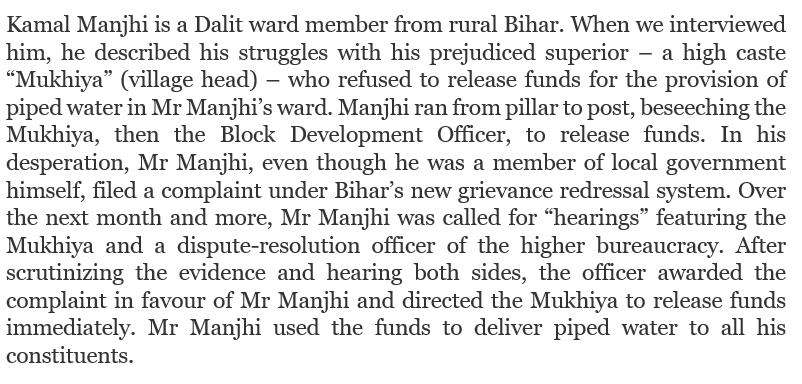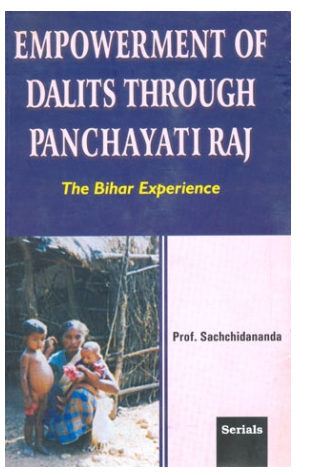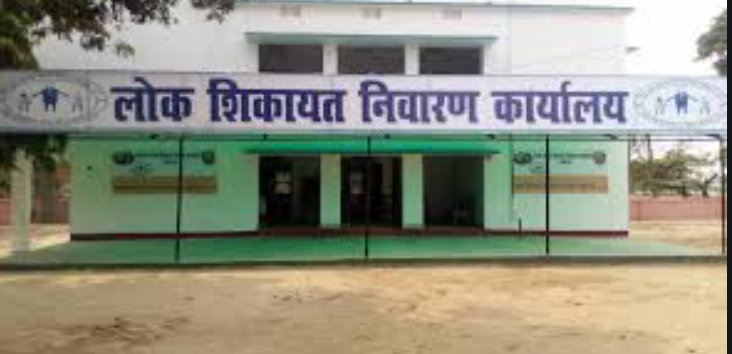Thread:
Here's one reading of the development story of Bihar in the recent Nitish years, told through the lens of local government and politics.
We begin (see image) with Mr Kamal Manjhi of Darbhanga, an elected rural ward member: https://blogs.worldbank.org/impactevaluations/something-complain-about-how-make-government-work-minorities-guest-post-mr-sharan
See link for more:
Here's one reading of the development story of Bihar in the recent Nitish years, told through the lens of local government and politics.
We begin (see image) with Mr Kamal Manjhi of Darbhanga, an elected rural ward member: https://blogs.worldbank.org/impactevaluations/something-complain-about-how-make-government-work-minorities-guest-post-mr-sharan
See link for more:
(2) The story has 3 elements:
(a) Decentralization
(b) Development Projects
(c) Responsive Government
More below:
(a) Decentralization
(b) Development Projects
(c) Responsive Government
More below:
A) Decentralization: Mr Manjhi is a ward member (WM). There are 114,000 (!) such WMs across Bihar. Every single one of them is elected. Each WM represents about 225 households.
In densely populated Bihar, that could = 3 streets!
In densely populated Bihar, that could = 3 streets!
(3) From independence to 2017, WMs, though elected, had little actual political power. Unlike other states -- like Karnataka or WB -- the village head ("Mukhiya") was directly elected.
Bihar's Panchayats are huge.
A Mukhiya is powerful and represents 3000 households!
Bihar's Panchayats are huge.
A Mukhiya is powerful and represents 3000 households!
(4) In the early 2000s, Prof Sachhidananda of the AN Sinha Institute wrote a book on Dalits in local government. Case study after case study spoke of how WMs were glorified citizens.
Only with direct access to state's resources, he argued, could WMs be empowered.
Only with direct access to state's resources, he argued, could WMs be empowered.
(5) In 2015, the Nitish Kumar-led government launched the "Saat Nishchay" schemes: 7 development programmes focusing on electricity, piped water, housing, scholarships, women empowerment.
WMs like Mr Manjhi were asked to implement key village lanes + piped water schemes.
WMs like Mr Manjhi were asked to implement key village lanes + piped water schemes.
(6) Crucially, they were given access to funds to implement these schemes.
In one stroke, the local government power structure had been decentralized: WMs controlled anything between 10 - 20 lakhs over 3-4 years. Still MUCH smaller than what Mukhiyas did, but it is a start.
In one stroke, the local government power structure had been decentralized: WMs controlled anything between 10 - 20 lakhs over 3-4 years. Still MUCH smaller than what Mukhiyas did, but it is a start.
(7) In 2016, the ward elections were often barely contested and elections were pretty low-stake affairs.
I expect things to be very different in 2021.
For those among us who think power should be diffused and decentralized, this qualifies as an improvement.
I expect things to be very different in 2021.
For those among us who think power should be diffused and decentralized, this qualifies as an improvement.
(8)
B) Development via Saat Nischay: Mr Manjhi's main problem was piped water scheme implementation, the money for which he controlled.
Over a 3 year period, Bihar implemented such schemes across nearly 100,000 wards, built drains and village lanes in another 100,000.
B) Development via Saat Nischay: Mr Manjhi's main problem was piped water scheme implementation, the money for which he controlled.
Over a 3 year period, Bihar implemented such schemes across nearly 100,000 wards, built drains and village lanes in another 100,000.
(9) How do I know this?
The government keeps meticulous records. We ran an audit in 2018 for these schemes: over 95% of these projects actually were built.
This is a very good strike rate by any standards.
The government keeps meticulous records. We ran an audit in 2018 for these schemes: over 95% of these projects actually were built.
This is a very good strike rate by any standards.
(9A) The other Saat Nischay schemes worked with varying degrees of success. But, the truth of the matter is that anyone doing fieldwork in Bihar these past few years couldn't have gone without seeing some progress along these dev projects.
So why didn't it help bring in votes?
So why didn't it help bring in votes?
(10) 2 broad reasons:
(i) While the assets were built, maintaining quality was much harder
(ii) Attribution: in repeated surveys, much of the development projects were attributed to Modi
(See paper by @NeelanjanSircar and @AiyarYamini: https://www.tandfonline.com/doi/abs/10.1080/09584935.2020.1765989)
(i) While the assets were built, maintaining quality was much harder
(ii) Attribution: in repeated surveys, much of the development projects were attributed to Modi
(See paper by @NeelanjanSircar and @AiyarYamini: https://www.tandfonline.com/doi/abs/10.1080/09584935.2020.1765989)
(11)
C) Responsive Government: When Mr Manjhi was in trouble, he appealed to Bihar's grievance redressal system (GRS), which I (along with @Chinmayak and others at the @IDFCinstitute) have studied.
C) Responsive Government: When Mr Manjhi was in trouble, he appealed to Bihar's grievance redressal system (GRS), which I (along with @Chinmayak and others at the @IDFCinstitute) have studied.
(12) Bihar made GRS a RIGHT. And mandated complaints against the govt be resolved within 60 days (now relaxed). Over 7 lakh complaints have been filed. About a third are resolved. Complainants are quite happy: in a survey (N ~= 1000), over 75% say the system works
13) Mr Manjhi's story, therefore, is not an exception: he complained about the piped water scheme and the GRS actually ensured he got the money to implement the scheme in his ward.
We have seen this play out over and over again. See: https://www.dropbox.com/s/gv0xbolyh6xvo9l/Something_To_Complain_About_MRSharan.pdf?dl=0
We have seen this play out over and over again. See: https://www.dropbox.com/s/gv0xbolyh6xvo9l/Something_To_Complain_About_MRSharan.pdf?dl=0
14) Of course, there are issues with the system.
Too few complaints are filed. And the system of "hearings" -- while very good for pulling up errant bureaucrats -- also mean that citizens need to travel to a relatively distant grievance redressal office to resolve complaints.
Too few complaints are filed. And the system of "hearings" -- while very good for pulling up errant bureaucrats -- also mean that citizens need to travel to a relatively distant grievance redressal office to resolve complaints.
15) But, the system is wide-ranging, covering complaints across 44 government departments. And the fact there are 101 dedicated Bihar Administrative Services (BAS) Officers whose only job is to listen to citizens' complaints indicates a state that is willing to listen.
14) So, in his latest term, Nitish Kumar made some progress in furthering decentralization, delivering development projects and trying to make citizens' grievances less severe.
Why, then, the anger?
Why, then, the anger?
15) One big reason is Bihar's limited progress in non-project based realms:
(i) the education system is in shambles; government schools have a long way to go; universities -- like their counterparts in many states-- are collapsing; a degree is cheap, but buys very little.
(i) the education system is in shambles; government schools have a long way to go; universities -- like their counterparts in many states-- are collapsing; a degree is cheap, but buys very little.
16)
(ii) The healthcare system barely works;Bihar miraculously seems to have escaped covid (young population?misreporting?):but that shouldn't take away from the skyrocketing out of pocket expenditures, the proliferation of quacks, the abdication of the PHCs to private parties
(ii) The healthcare system barely works;Bihar miraculously seems to have escaped covid (young population?misreporting?):but that shouldn't take away from the skyrocketing out of pocket expenditures, the proliferation of quacks, the abdication of the PHCs to private parties
17) (iv) Industry: Try as he might, Kumar couldn't attract industry & investment into the state, with the result that the state government remained both a large spender and main employer for a large chunk of the population.
Others wiser than me have written about these issues
Others wiser than me have written about these issues
18) In some sense, with every passing term, Kumar has a steeper hill to climb, with the low hanging fruit -- roads, law and order, social justice via caste reservations (see: https://www.dropbox.com/s/jhium8qsrod8lmv/Distributional_Consquences_May1.pdf?dl=0), electricity + water connections, cycles for girls -- being plucked dry.
19) The higher fruit need bolder -- even newer? -- ideas, better structured policy + MONEY.
With growth crashing all round, a surge in rural popn and limited access to remittances, this augurs poorly for the state.
I wouldn't envy the CM -- whoever it may be -- right now.
With growth crashing all round, a surge in rural popn and limited access to remittances, this augurs poorly for the state.
I wouldn't envy the CM -- whoever it may be -- right now.
PS: Some literature
(a) On the cycles scheme, by @Prof_Nishith_P and @karthik_econ: https://pubs.aeaweb.org/doi/pdfplus/10.1257/app.20160004
(b) On Musahars: see Arun Kumar's stark take on the cultural capital (of farce) of Musahars: https://www.jstor.org/stable/pdf/4418787.pdf?casa_token=PStGzDzFLiUAAAAA:GT4Ow8BL7AQW1kJ0tIPJr4GBu3BQzw9L7v8sTohcz5e09tKf6hSv5miTH0uA-9eo5VmWH9U6m9YI_2DwpolTE1vUGtB0XlQH3BLegif8hu55ShQXPw
(c) Past Mukhiya elections: https://journals.sagepub.com/doi/pdf/10.1177/006996670503900303?casa_token=VjkQhejufs4AAAAA:a5EE_5udw4ALozW_K_6tiMkELAVpRlBPip0XgYuj1TZSVP15vgg5_3myKEkPqvCdhVjlDbAq5Eg
(a) On the cycles scheme, by @Prof_Nishith_P and @karthik_econ: https://pubs.aeaweb.org/doi/pdfplus/10.1257/app.20160004
(b) On Musahars: see Arun Kumar's stark take on the cultural capital (of farce) of Musahars: https://www.jstor.org/stable/pdf/4418787.pdf?casa_token=PStGzDzFLiUAAAAA:GT4Ow8BL7AQW1kJ0tIPJr4GBu3BQzw9L7v8sTohcz5e09tKf6hSv5miTH0uA-9eo5VmWH9U6m9YI_2DwpolTE1vUGtB0XlQH3BLegif8hu55ShQXPw
(c) Past Mukhiya elections: https://journals.sagepub.com/doi/pdf/10.1177/006996670503900303?casa_token=VjkQhejufs4AAAAA:a5EE_5udw4ALozW_K_6tiMkELAVpRlBPip0XgYuj1TZSVP15vgg5_3myKEkPqvCdhVjlDbAq5Eg

 Read on Twitter
Read on Twitter




